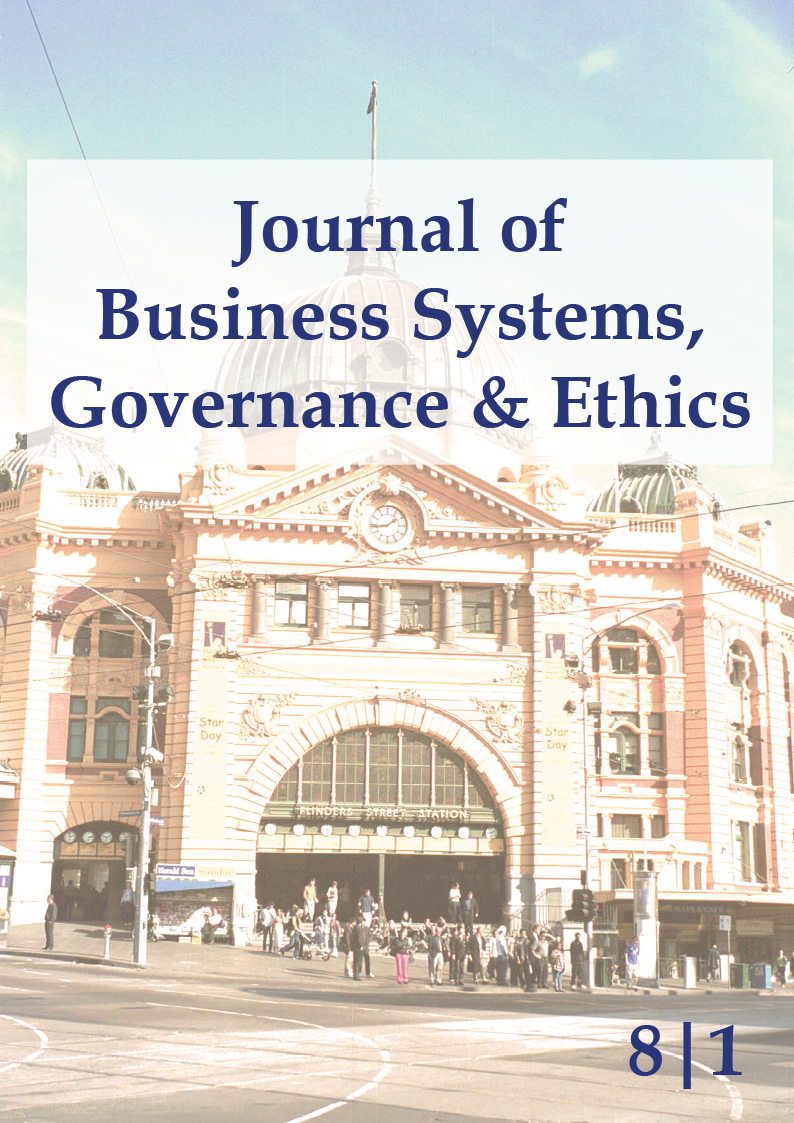Social and Governance Changes
Rate, Principles and Morals
DOI:
https://doi.org/10.15209/jbsge.v8i1.330Abstract
This paper draws attention to two aspects of change; first, the rate of social change is a source of concern, to this is added that both the configuration of changes and the values dimension, add to those concerns. Change makes it hard to keep up, and is the generator of much stress. We need to apprehend that such a point applies strongly to all enterprises, in particular to governance issues. This article holds that the rate of change is compounded by a constantly changing configuration. To ameliorate those concerns it is held that there needs to be both an expression of agreed basic principles, and recognition that values are one of the most vital parts of that selection. In this the debate and explication of guiding principles, particularly in governance, that is crucial. The main point here is to again emphasise the complexity that results not only from the rate of change but also the configuration and moral values that it constantly tests. It is only by direct consideration that concern over such issues be reduced. It is also held that an explication of basic principles is a significant aid to coping with the source of such stress.
Published
How to Cite
Issue
Section
License
Authors who publish with this journal agree to the following terms:- Authors retain copyright and grant the journal right of first publication with the work simultaneously licensed under a Creative Commons Attribution License that allows others to share the work with an acknowledgement of the work's authorship and initial publication in this journal.
- Authors are able to enter into separate, additional contractual arrangements for the non-exclusive distribution of the journal's published version of the work (e.g., post it to an institutional repository or publish it in a book), with an acknowledgement of its initial publication in this journal.
- Authors are permitted and encouraged to post their work online (e.g., in institutional repositories or on their website) prior to and during the submission process, as it can lead to productive exchanges, as well as earlier and greater citation of published work (See The Effect of Open Access).


